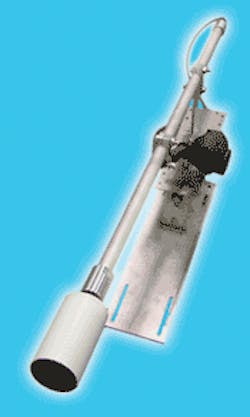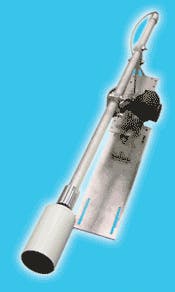New Sonar Technology Improves Interface Level Monitoring
A new “third generation” sonar-based monitoring system uses a number of sonar transducer frequencies to monitor various sludge and flock layers in both drinking water and wastewater treatment applications. By choosing the correct transducer frequency, the instrument can measure both light and heavy density interfaces.
Most existing sonar transmitter technologies use only one sonar transducer frequency and are limited in their applications for sludge-level monitoring. The new ORCA Sonar Series of interface level transmitters from Hawk Measurement use seven different sonar transducer frequencies, so the appropriate frequency can be selected according to the density of the interface that is being controlled and monitored.
This flexibility allows for use of a different sonar transducer frequency for each of the main applications at a wastewater treatment plant: Primary Sedimentation Tanks, Secondary/Final Clarifiers, Thickeners, and DAF Tanks.
Typically, one of the more difficult tasks in monitoring an interface level lies in the correct selection of the transducer frequency. The higher the transducer frequency, the easier it becomes to see smaller particle sizes. The disadvantage is the lack of penetration and a higher likelihood of air bubbles forming on the sensor face, creating impedance to the transmit and received signals. Lower transducer frequencies will not see such small particles, but will see a more clearly defined interface.
There are many other variables to consider. They include particle size, flow, velocity, material, and air bubble retention. The frequency selection should be based upon the percent solids, plus a logical placement of the sensor taking into consideration the other process variables.
Providing accurate measurements up to 100 feet (30 meters), the ORCA Series’ sonar transmits a sound pulse through liquid toward the bottom of the tank. The pulse is then reflected back to the sonar transducer and interpreted via the sonar transmitter and compensated for temperature. Additionally, the system provides a second independent sonar output that can be programmed to track either the clarity of the liquid, monitor the change of suspended solids, or monitor the fluff/floc layer to prevent overflow into the launders.
Rather than reflecting small signals of 300 millivolts off the desired density interface, the ORCA system transmits signals as large as 2500 millivolts because of its optimization of the sonar transducer frequency. With this added power, the instrument can continue to control the RAS blanket density at the bottom of a secondary clarifier even when bulking and settling problems occur.
The RAS blanket and fluff layer are two interfaces that must be monitored within a secondary clarifier to optimize the efficiency of the tank. They are monitored at respective densities of 4 g/L and 600 mg/L. Secondary clarifiers can suffer from stratified interfaces when process stability is lost, which can trick first generation sonar transmitters into believing that the interface is higher in the tank than it really is. The ORCA Sonar Series’ algorithms solve this problem by concealing the stratified interface from detection.
Designed to be immersed just below the surface of the water, the transducers are continually cleaned by an automatic scum-cleaning system. Offering a CDMA modem for remote technical and diagnostic support, the system is engineered to be MODBUS, Profibus and HART Comms compatible.
Headquartered in Middleton, MA, Hawk Measurement America is a division of Hawk Measurement Systems Pty. Ltd. For more information on the company’s products and services, visit www.hawkmeasure.com

